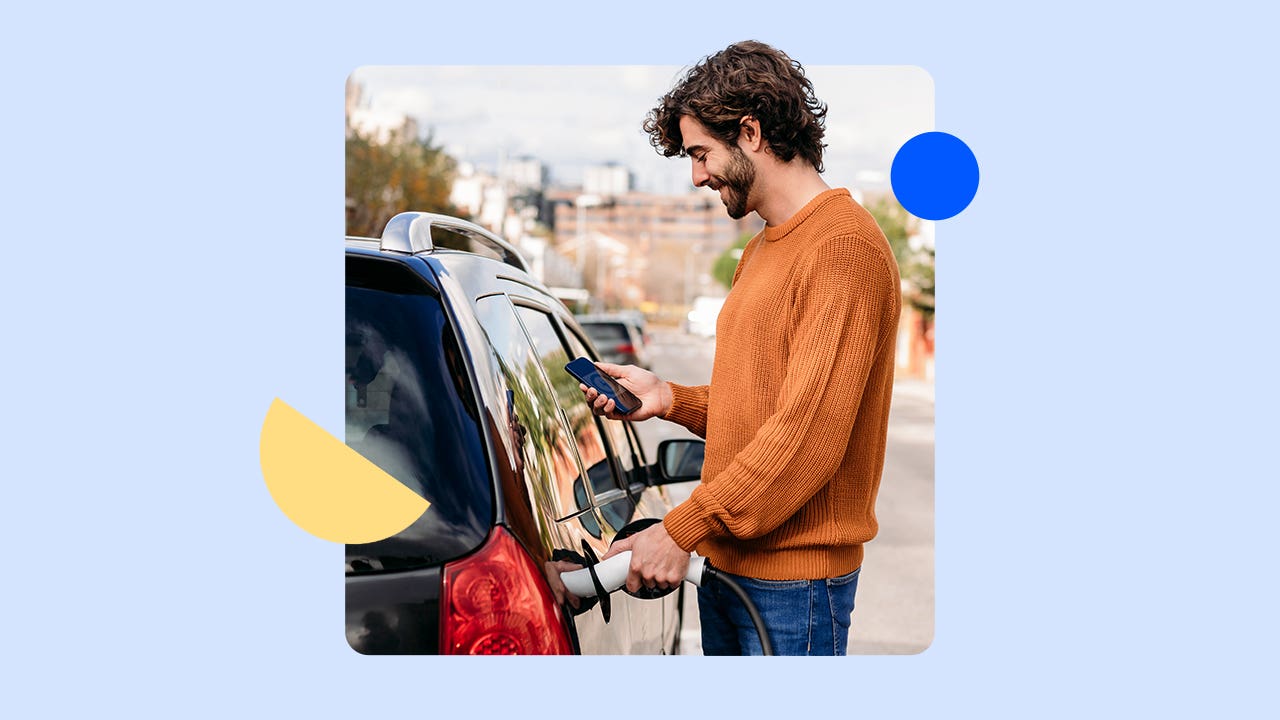What does car insurance cover?

The Bankrate promise
At Bankrate, we strive to help you make smarter financial decisions. To help readers understand how insurance affects their finances, we have licensed insurance professionals on staff who have spent a combined 47 years in the auto, home and life insurance industries. While we adhere to strict , this post may contain references to products from our partners. Here's an explanation of . Our content is backed by Coverage.com, LLC, a licensed entity (NPN: 19966249). For more information, please see our .
Your car insurance policy may only be top of mind when you need it most, like in the event of an accident, but understanding your coverage ahead of time may ensure you’re sufficiently covered. There are several different car insurance policies and coverage types, each designed to kick in in different scenarios. Bankrate’s insurance editorial team aims to help you understand what car insurance covers, how to meet your state’s requirements, the coverage options available and how to find the right car insurance company for you.
How does car insurance work?
Car insurance protects drivers financially in the event of an accident or another type of covered incident. It’s a legal requirement in almost every state, so most drivers will need to maintain at least the state-required minimum coverage. Understanding how car insurance works can help you make informed decisions about your coverage options and limits. Here’s a breakdown of the key aspects of car insurance:
- Coverage types: Some coverage types, like liability, come standard with all policies while others, like collision and comprehensive, are only included in full coverage policies. The coverage types included on your policy determine what types of damage your policy will cover.
- Coverage limits: Your insurance company will pay up to a certain limit per incident or per policy term for each coverage type. Higher limits offer more financial protection.
- Deductibles: Some coverage types have deductibles, which is the amount you pay out of pocket in the event of a covered claim. Choosing higher deductibles means lower premiums and vice versa.
Minimum liability coverage
Minimum liability coverage is the least amount of coverage you can buy as legally required by your state. Each state has its own minimum coverage requirements, but almost all of them require a certain amount of liability insurance. On average, minimum coverage costs $644 per year. Depending on the state, you can decline certain car insurance coverage types, even when offered.
Bodily injury liability
Bodily injury liability pays for the other driver and their passengers’ injuries if you cause an accident. This coverage helps pay for their medical bills, lost wages and pain and suffering from the accident. Most states require a minimum amount of bodily injury liability. Liability coverage does not have a deductible, but there is a coverage limit. If you exceed your coverage limit, you’re responsible for the additional costs.
Property damage liability
If you cause an accident and damage someone’s property, property damage liability would pay for it. Property damage is most often caused to someone’s vehicle, but could also be a fence, mailbox, utility pole, guard rail or building. Just like bodily injury liability, this coverage is usually required and has a coverage limit, but does not have a deductible.
Uninsured and underinsured motorist coverage
Though not required in all states, uninsured motorist coverage and underinsured motorist coverage financially protects you if someone hits you and does not have any insurance or enough coverage to pay for your injuries and, in some cases, property damage. Uninsured motorist coverage may have the same limits as your liability coverage, but they can also differ depending on the amounts you choose and what is available in your state.
In some instances, uninsured motorist coverage may apply to a hit-and-run accident, when another driver is at fault and leaves the scene without providing insurance information. In the case of a hit-and-run, there may be stricter stipulations about how soon you have to report the accident and file a claim. Additionally, some states prevent the coverage from applying in cases where the at-fault driver is unidentified.
Personal injury protection
Some states require personal injury protection (PIP), though some allow you to waive coverage. PIP insurance pays up to your coverage limits if you or your passengers are injured in an accident, regardless of fault. It also covers you as a passenger in someone else’s vehicle. If you include PIP coverage on your car insurance, it may cover:
- Medical costs
- Lost wages
- Funeral expenses
- Childcare
- Household services
Childcare and household services are only covered if needed while you are recovering from your injuries. The amount you can buy varies by state, and there is no deductible to use this coverage.
Medical payments coverage
Medical payments coverage pays for medical expenses you incur if you are injured in an accident, regardless of fault. If you select this coverage, it follows you when you are walking, riding a bike, on public transportation, driving your car or someone else’s or if you are a passenger. Like PIP, there is no deductible to pay for coverage, but you have a coverage limit. Medical payments coverage is available in states where PIP is not offered.
Full coverage car insurance
With minimum liability coverage, you miss out on physical damage coverage for your car. If you want the insurance company to pay for repairs to your car in a covered claim, consider full coverage car insurance. If your vehicle is financed or leased, you will likely be required to carry full coverage. The national average cost of full coverage car insurance is $2,314 per year.
However, your rate may differ based on your driving history, location, coverage types and selected deductibles.
Collision
Collision coverage pays for the damage to your car caused by hitting another vehicle or object, regardless of fault. A deductible will apply to this coverage based on the amount you select.
Comprehensive
Comprehensive coverage, also called other-than-collision coverage, pays for the damage to your car not covered by collision. This includes:
- Broken windows or windshields
- Hitting an animal
- Theft of the car
- Vandalism
- Weather events
Like collision, the deductible you choose for comprehensive coverage applies when you file a comprehensive claim.
Other types of coverage
Most insurance companies offer add-on coverage types to round out your policy’s coverage. While options vary by state, other types of coverage could include:
- Gap insurance: This coverage is for new vehicles that are financed or leased. If your car is totaled in an accident or stolen and unrecoverable, gap insurance would pay the difference between your totaled car’s worth and what you owe.
- New car replacement: If your car is only a few years old and you have full coverage, you may qualify for this coverage. With new car replacement, if your car is totaled, you get the value to replace your car with the same year, make and model, instead of the depreciated value.
- Roadside assistance: This coverage pays for service to assist you if your car breaks down. Coverage varies but usually includes towing, key lockout, bringing fuel, battery jump start and tire changes.
- Rental car coverage: If your vehicle is under repair due to a covered claim, your insurance can help pay for a rental car.
When additional coverage helps
In the realm of car insurance, there are several scenarios where opting for additional coverage can provide vital financial protection. These extra options, often not included in standard policies, can be crucial in specific situations. Let’s explore some of these scenarios to understand when and why these coverages might be necessary.
- Uninsured motorist coverage and underinsured motorist coverage: These coverage types could be a lifeline if you’re involved in an accident with a driver who either lacks insurance or has insufficient coverage. While it’s typically optional, this coverage can cover medical expenses or car repairs that the other party’s insurance should have covered.
- Comprehensive coverage: This type of insurance is designed to protect your vehicle from non-collision events, such as theft, vandalism or natural disasters. For instance, if your car is damaged due to a hailstorm or stolen, comprehensive coverage could help cover the cost of repairs or replacement.
- Personal injury protection (PIP): In some states, PIP is mandatory, but in others, it’s an optional add-on. This coverage could be crucial for covering medical expenses, lost wages or other costs associated with injuries from a car accident, regardless of who is at fault.
- Collision coverage: Although not always required, collision coverage can be important if you’re in an accident with another vehicle or object, like a fence or a tree. This coverage can help pay for repairs to your car, even if you’re at fault for the accident.
In these scenarios, having the right additional coverage can make a significant difference in managing the financial implications of unexpected events. It’s important to note that while these coverage options can provide substantial benefits, they also come at additional costs. Therefore, it’s wise to consider your personal needs, the value of your vehicle and your financial situation when deciding on if additional coverage makes sense for your situation.
Who is covered by my car insurance policy?
The people listed as insured drivers on your auto insurance policy are covered to drive your car. If someone not listed on your policy has permission to temporarily drive your car, they are also usually covered. This is called permissive use. For example, if you let your neighbor drive your car and they get into an accident, your insurance policy will likely cover the damages as if you were the driver of the vehicle. Keep in mind that if they get into an accident, it falls under your insurance policy and can affect your insurance premiums. Also, insurance companies have different criteria for what is considered permissive use, so before you hand over your keys, check with your company to ensure the driver is covered.
What does car insurance not cover?
If you’re wondering what car insurance covers, you’re also probably wondering what does car insurance not cover? To find out, check your auto insurance policy for details regarding what is and is not covered in your policy. There are a few things that are not covered by car insurance with many insurance companies:
- Damage beyond coverage limits: When you purchase car insurance, you choose coverage limits. The policy declarations page will outline your limits, which is the maximum amount your auto insurance company must pay in a covered claim. You handle the rest of the expenses out of pocket, so most insurance experts recommend buying as much coverage as you need to be financially protected.
- Specialty vehicles: High-value, exotic, performance or vintage vehicles may not be eligible for coverage or properly covered under a standard auto insurance policy. Some companies offer specialty insurance policies tailored to meet the needs of these types of vehicles.
- Maintenance and repairs: Car insurance does not cover your vehicle’s maintenance and normal wear and tear. You are responsible for keeping your car running, including regular maintenance the manufacturer recommends. Some insurance companies may offer mechanical breakdown insurance, which could provide some coverage.
- Rideshare: If you rideshare, there is likely a gap in coverage where you are not covered when not actively completing a ride. You should check to see what coverage the rideshare company provides and consider what personal rideshare insurance you could purchase to offer more financial protection.
- Delivery: If you use your car for delivery purposes, like delivering pizzas, your car insurance will likely not cover any damages that occur while driving for hire. Driving for hire is any driving you do with your personal vehicle that earns you money. Some insurance companies offer delivery coverage on your personal policy (or a commercial policy) for these purposes.
- Racing: If you damage your car while racing or participating in other motorsports, standard auto insurance will not cover the damages. This includes racing on the street or highway with another driver or on a racetrack.
- Illegal activity: Illegal activities directly related to the cause of a car insurance claim would not be covered. For example, if you were found guilty of insurance fraud by intentionally staging an accident, your claim would be denied and you could even face jail time.
Frequently asked questions
-
-
When searching for the best car insurance company, you should consider your wants and needs from an insurance company and policy. Each driver has unique needs, like taking part in rideshare or meeting lender requirements, so it is important to find a company that can honor your needs. To find the best car insurance company, consider getting quotes from different carriers to compare coverages, discounts and rates for your personal and household criteria.
-
Most states have minimum coverage requirements, which can help you determine how much car insurance you need. You must meet at least the minimum requirements in your state to legally drive. However, many drivers may need full coverage if their vehicle is financed. Other drivers may also want additional optional coverages, like rental car reimbursement and roadside assistance. Consider which coverage types you need and what coverage amounts will protect you financially before researching insurance companies, so you can work with a company with the type of car insurance coverage you need. Licensed agents will know the minimum requirements for your state, so speaking with one can ensure you are confident in your coverage amounts.
-
Depending on the coverage you have on your vehicle, you might be able to file an insurance claim if you damage your car. Collision coverage is typically used when you are at fault in an accident, and your car is damaged. Collision insurance will pay to repair your car or replace it based on its market value, less your deductible amount. Remember that your auto insurance policy does not cover intentionally damaging your car.
-
Some people may consider paying out of pocket for a car accident to avoid a premium increase, but this decision should be made thoughtfully. If you’re involved in an accident with another person and agree to pay out of pocket, the other driver could still file a claim later. If the other person decides to file the claim, not only will you be on the hook for you’ve already paid out of pocket, but the claim would still count against you.However, if you get into a car accident that only involves your vehicle and only results in minor damage, paying for the repairs yourself may make sense if the bill is lower than your collision deductible. In general, insurance professionals agree that you should file a claim for most accidents unless they result in no injuries and very little damage.
-
Yes, standard auto insurance includes theft and vandalism coverage as long as you carry a full coverage policy. Your comprehensive coverage would cover both your vehicle and parts if they were stolen, as well as damage to your vehicle caused by the thieves. Personal property within your vehicle is generally not covered unless you add an endorsement for it, but it may be covered by your homeowners or renters insurance.
-
Related Articles



